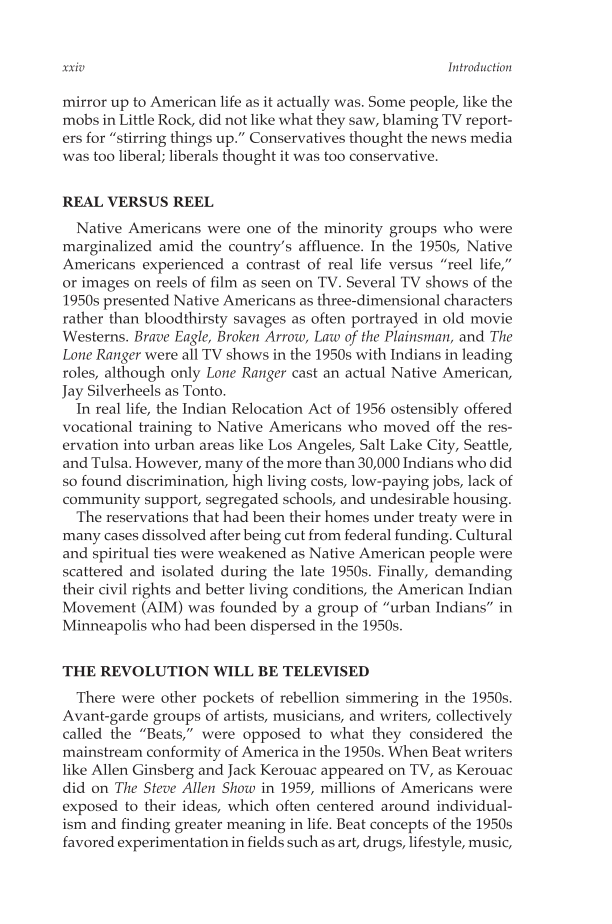xxiv Introduction mirror up to American life as it actually was. Some people, like the mobs in Little Rock, did not like what they saw, blaming TV report- ers for “stirring things up.” Conservatives thought the news media was too liberal liberals thought it was too conservative. REAL VERSUS REEL Native Americans were one of the minority groups who were marginalized amid the country’s affluence. In the 1950s, Native Americans experienced a contrast of real life versus “reel life,” or images on reels of film as seen on TV. Several TV shows of the 1950s presented Native Americans as three-dimensional characters rather than bloodthirsty savages as often portrayed in old movie Westerns. Brave Eagle, Broken Arrow, Law of the Plainsman, and The Lone Ranger were all TV shows in the 1950s with Indians in leading roles, although only Lone Ranger cast an actual Native American, Jay Silverheels as Tonto. In real life, the Indian Relocation Act of 1956 ostensibly offered vocational training to Native Americans who moved off the res- ervation into urban areas like Los Angeles, Salt Lake City, Seattle, and Tulsa. However, many of the more than 30,000 Indians who did so found discrimination, high living costs, low-paying jobs, lack of community support, segregated schools, and undesirable housing. The reservations that had been their homes under treaty were in many cases dissolved after being cut from federal funding. Cultural and spiritual ties were weakened as Native American people were scattered and isolated during the late 1950s. Finally, demanding their civil rights and better living conditions, the American Indian Movement (AIM) was founded by a group of “urban Indians” in Minneapolis who had been dispersed in the 1950s. THE REVOLUTION WILL BE TELEVISED There were other pockets of rebellion simmering in the 1950s. Avant-garde groups of artists, musicians, and writers, collectively called the “Beats,” were opposed to what they considered the mainstream conformity of America in the 1950s. When Beat writers like Allen Ginsberg and Jack Kerouac appeared on TV, as Kerouac did on The Steve Allen Show in 1959, millions of Americans were exposed to their ideas, which often centered around individual- ism and finding greater meaning in life. Beat concepts of the 1950s favored experimentation in fields such as art, drugs, lifestyle, music,
Document Details My Account Print multiple pages
Print
You have printed 0 times in the last 24 hours.
Your print count will reset on at .
You may print 0 more time(s) before then.
You may print a maximum of 0 pages at a time.





































































































































































































































































































































